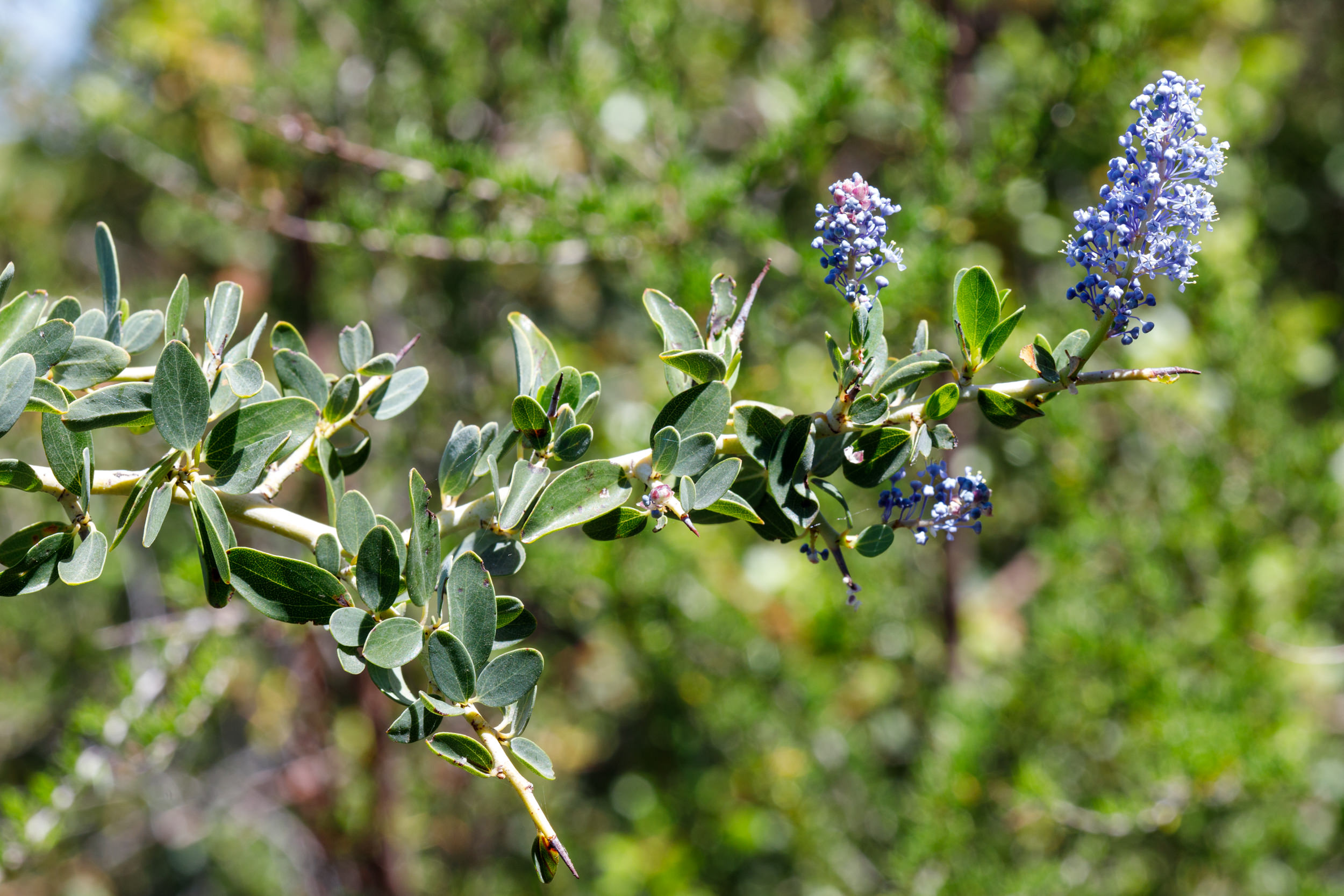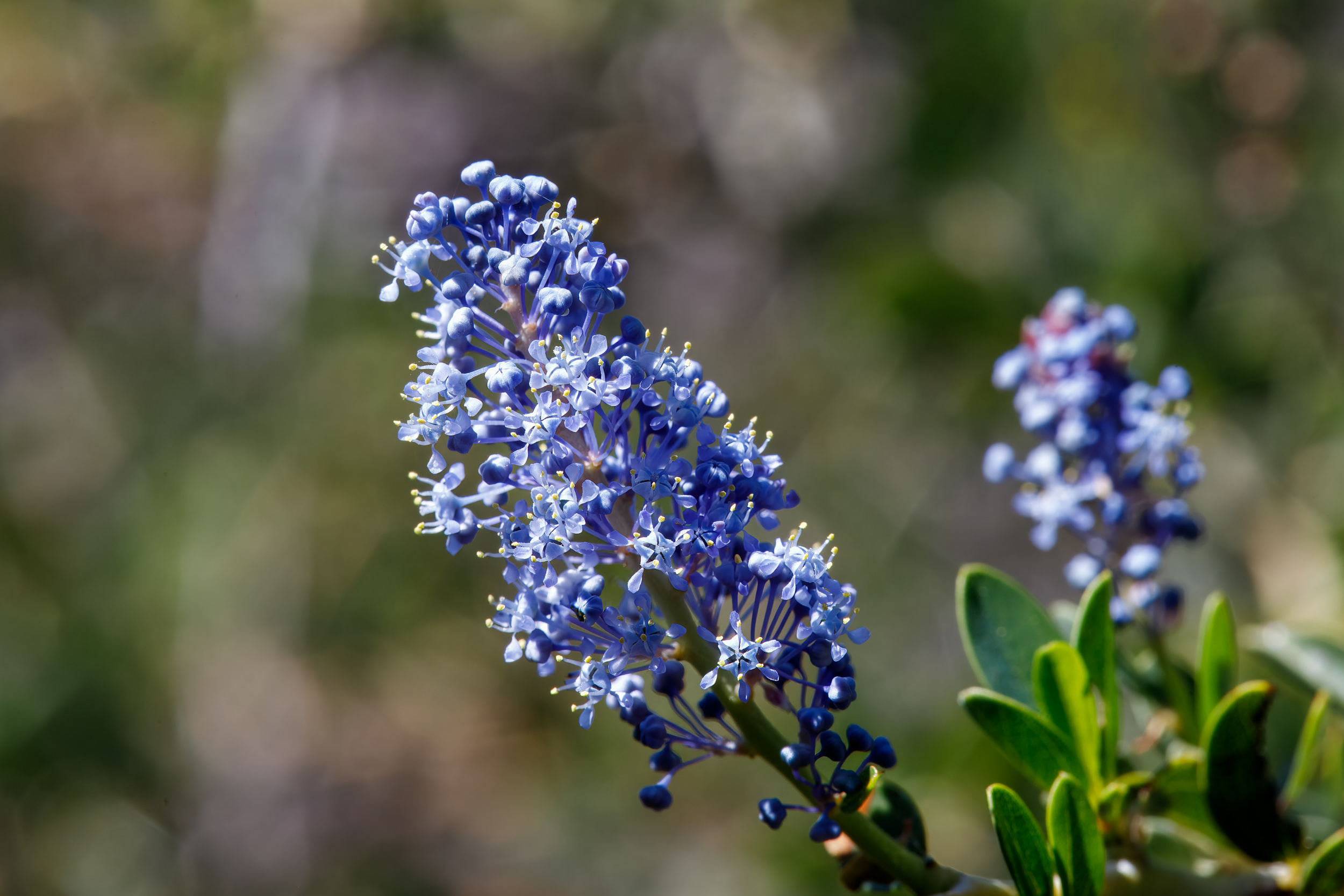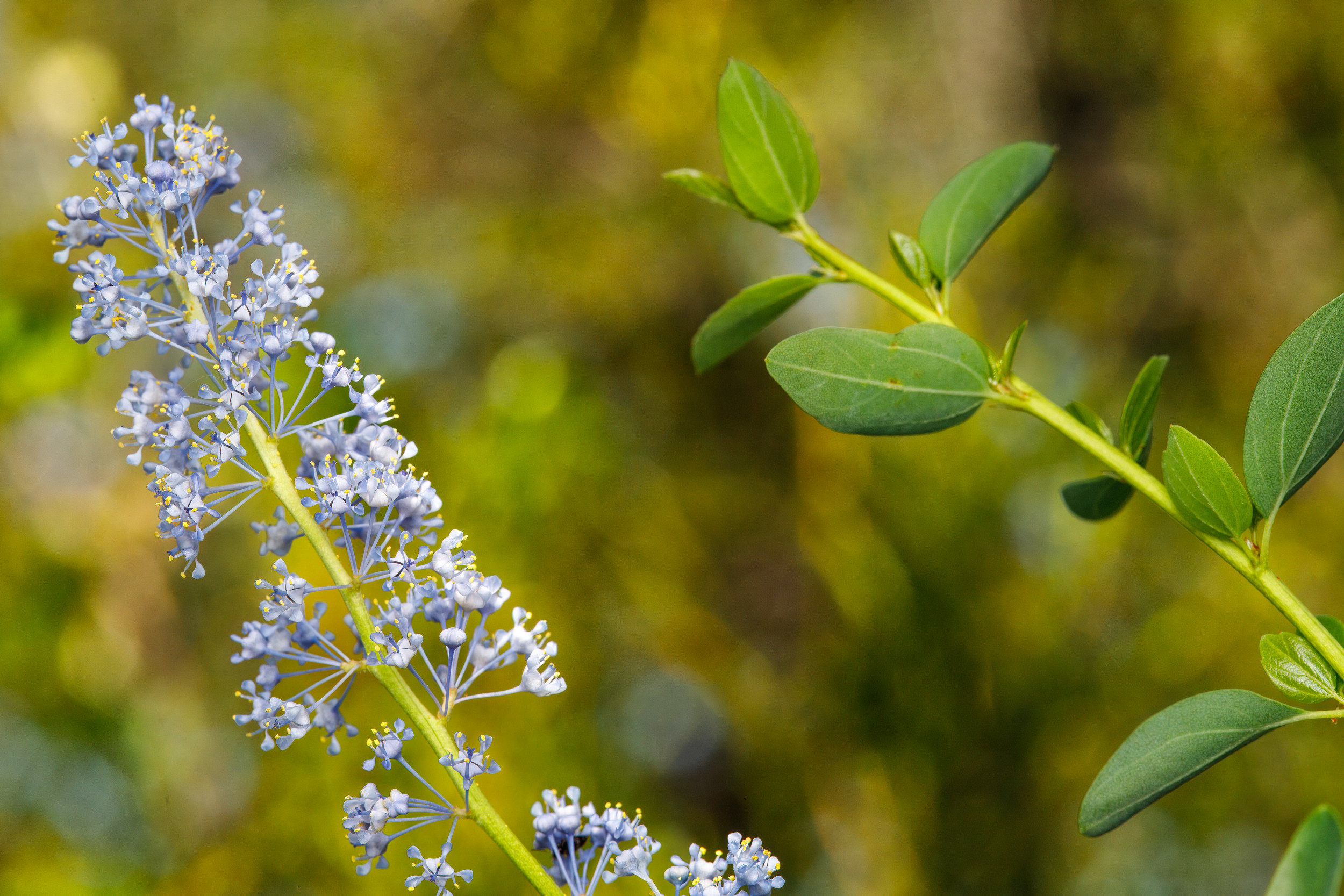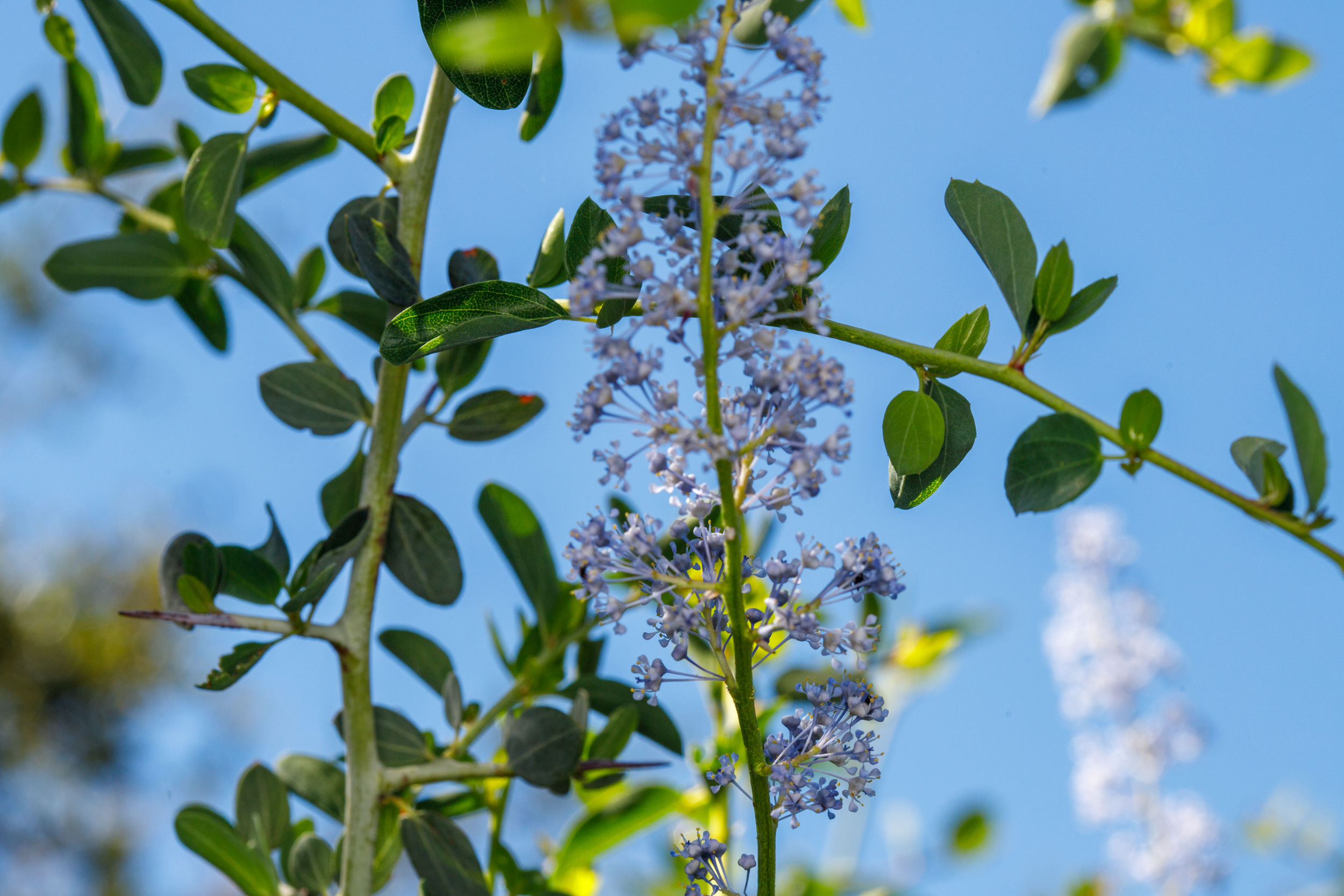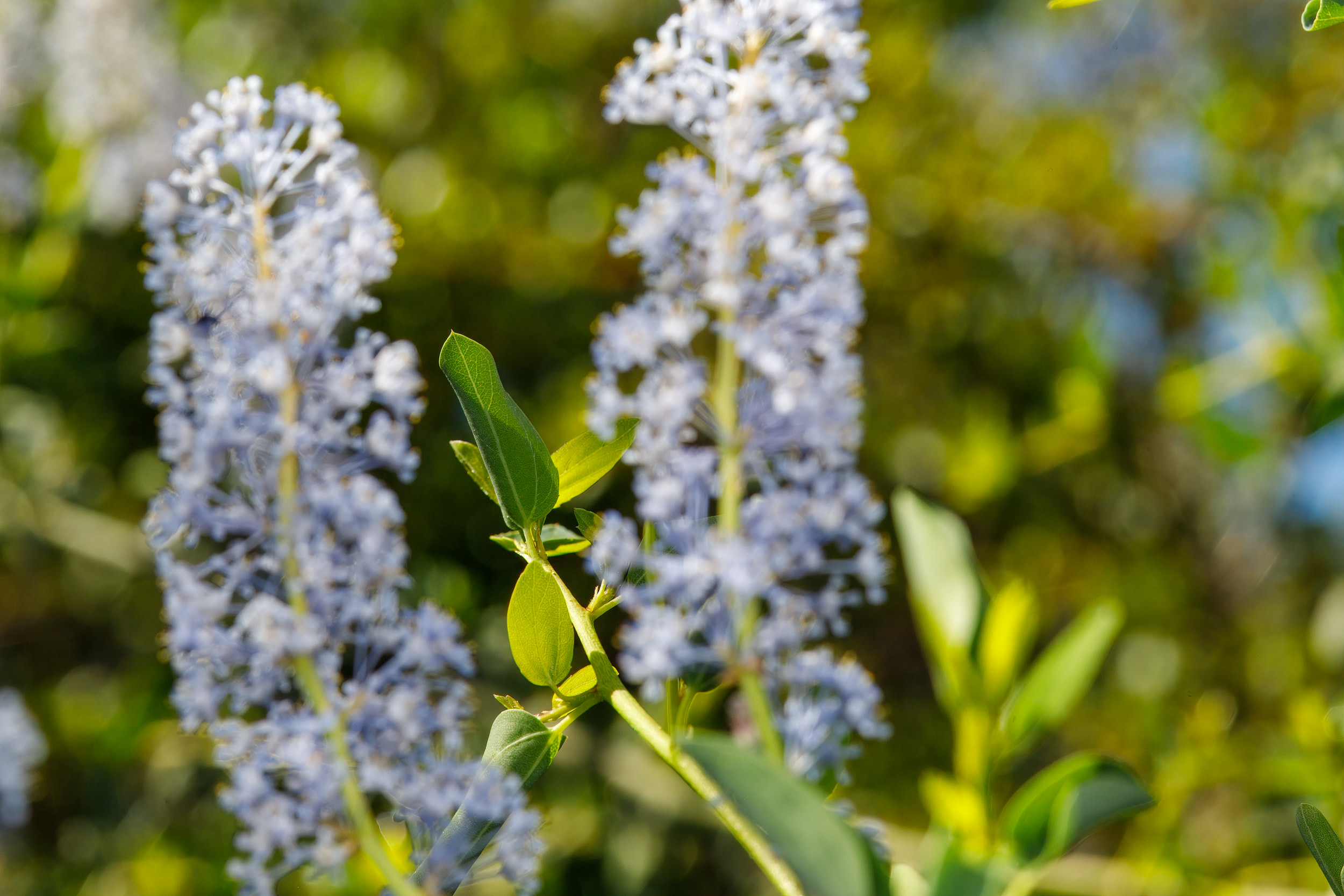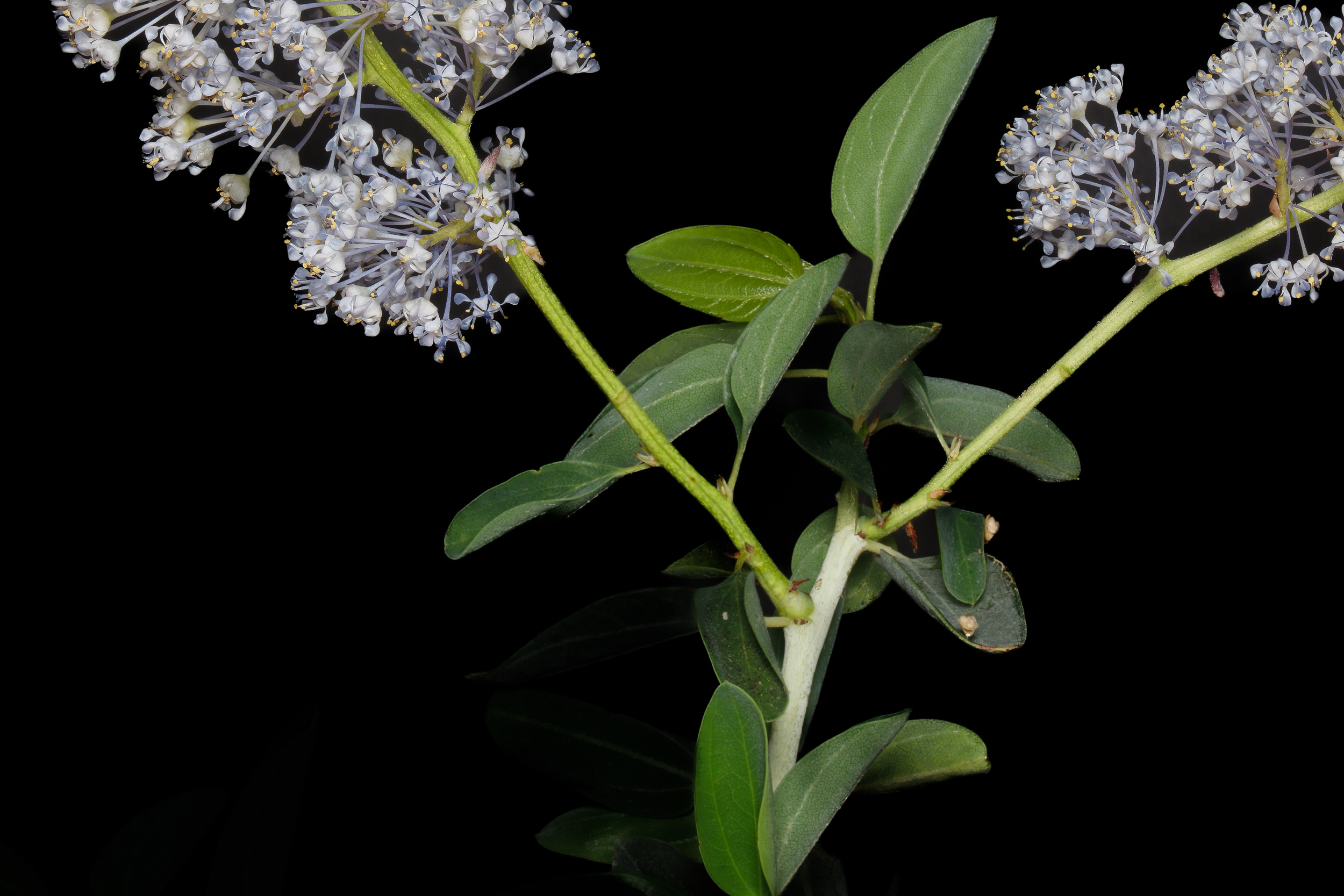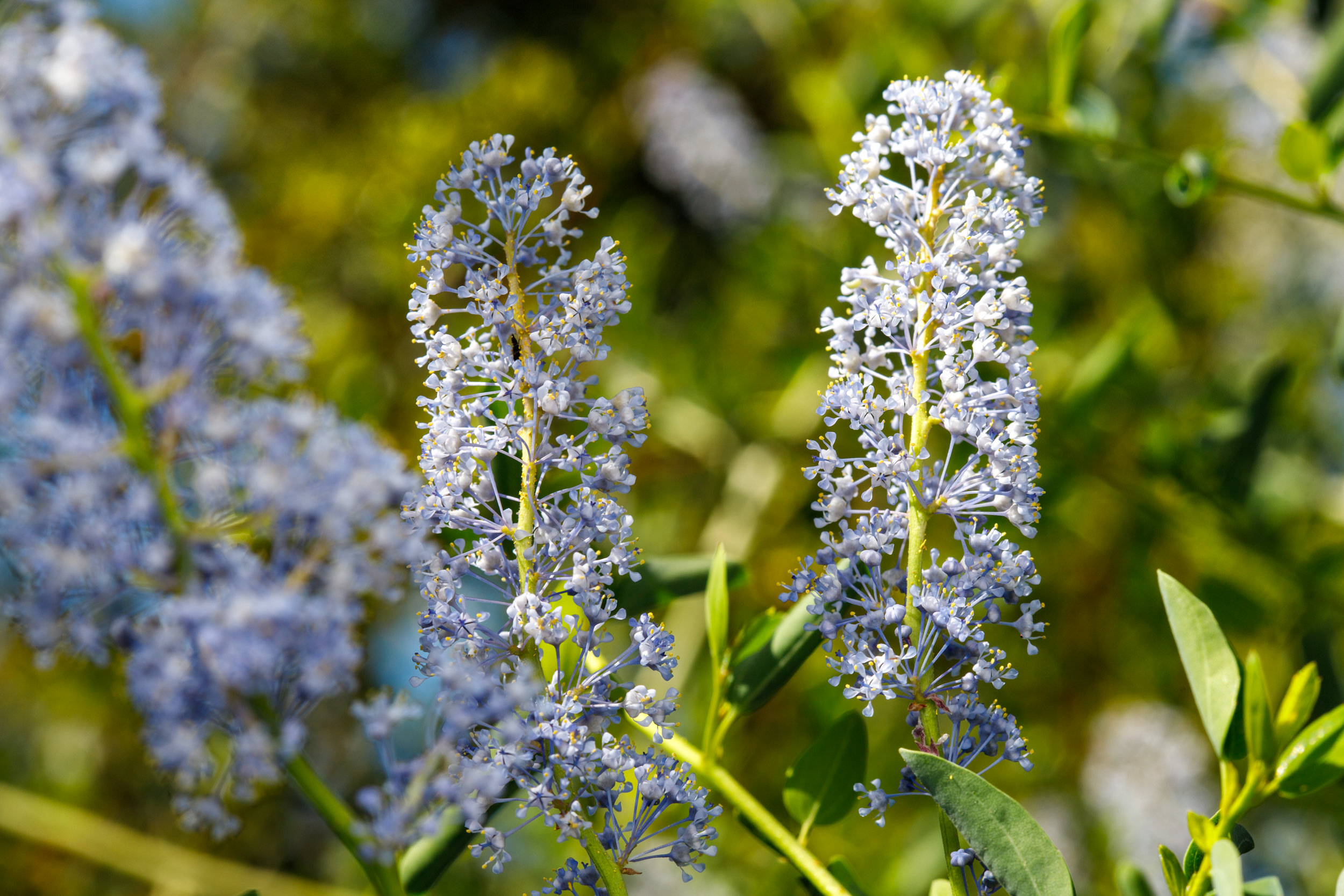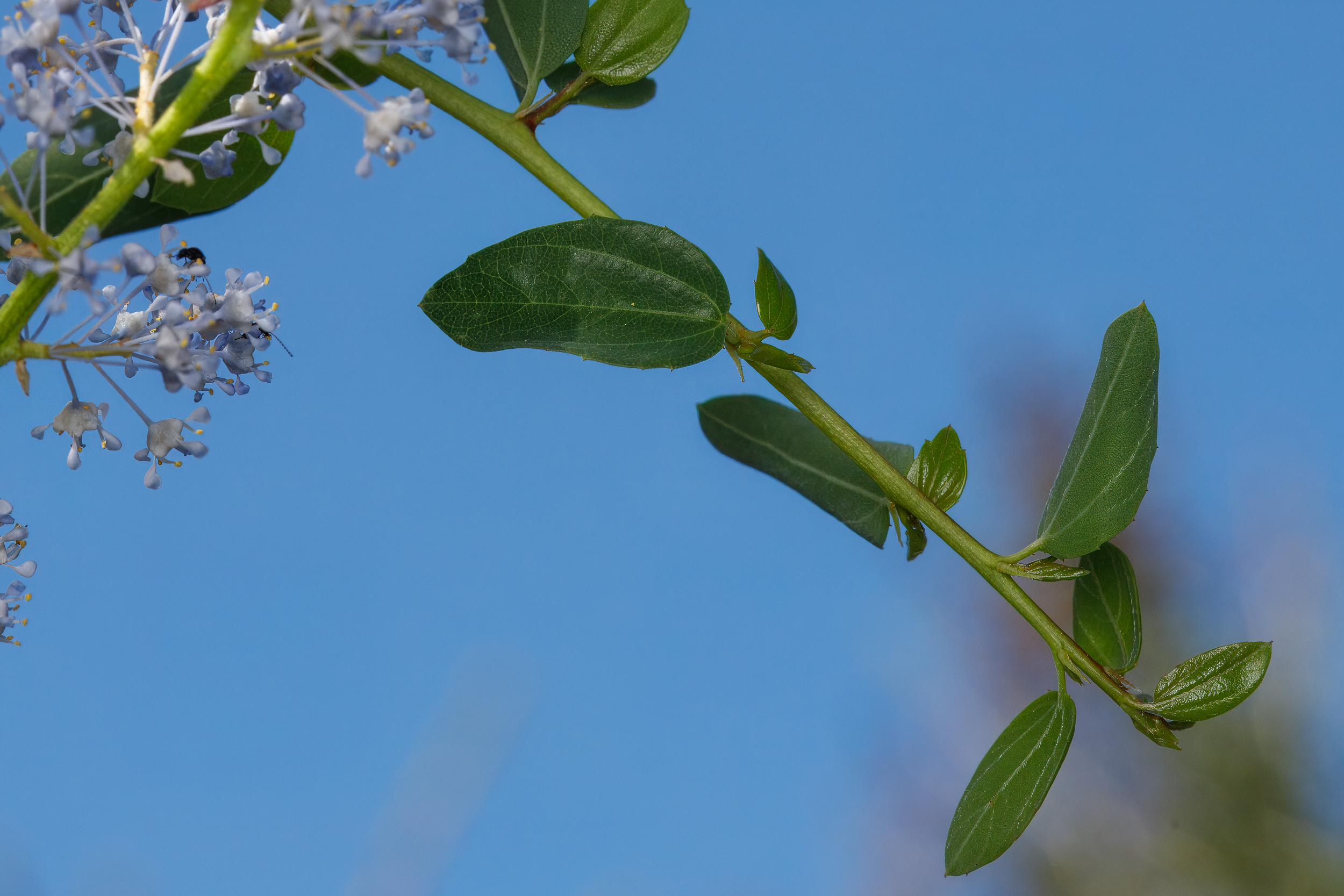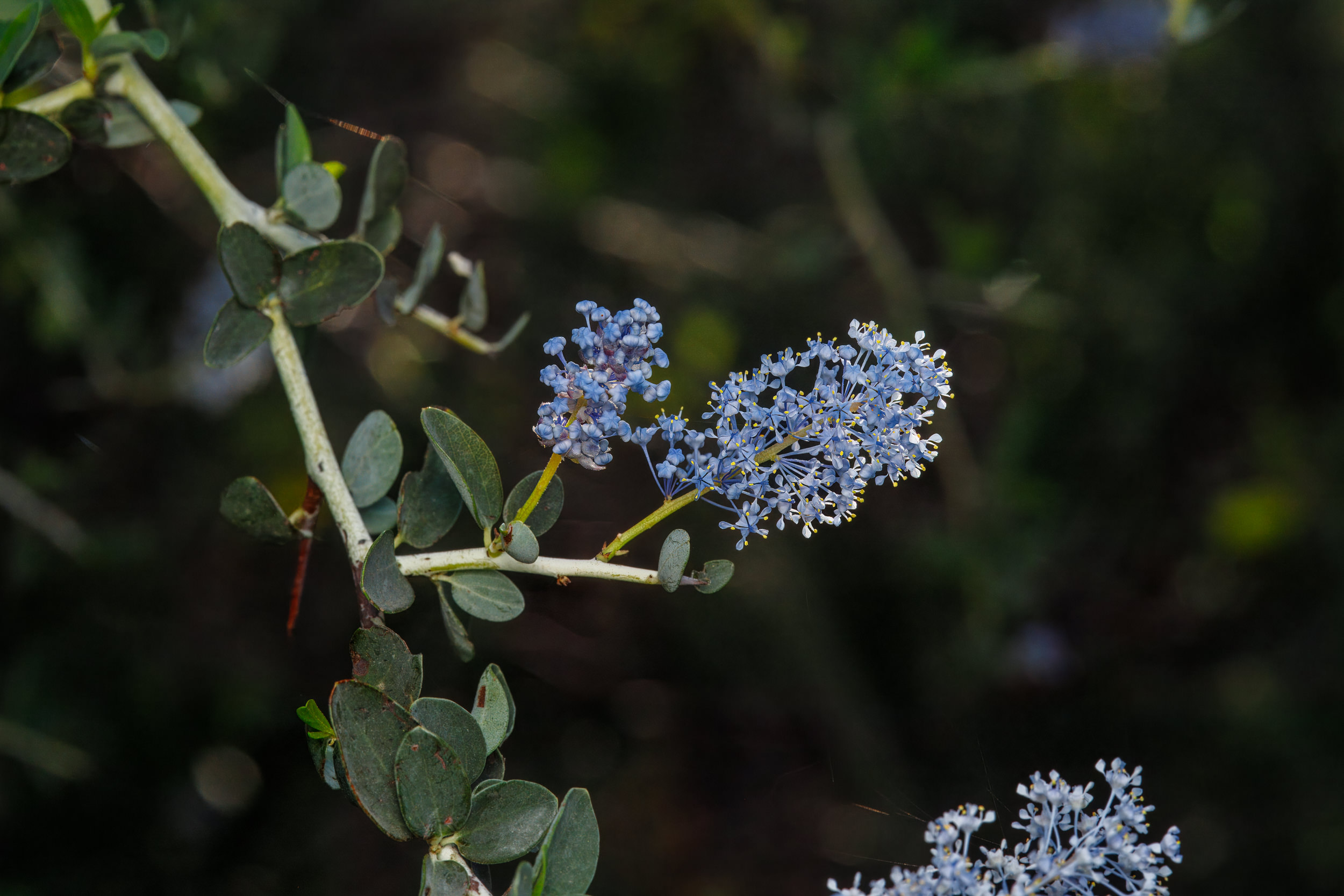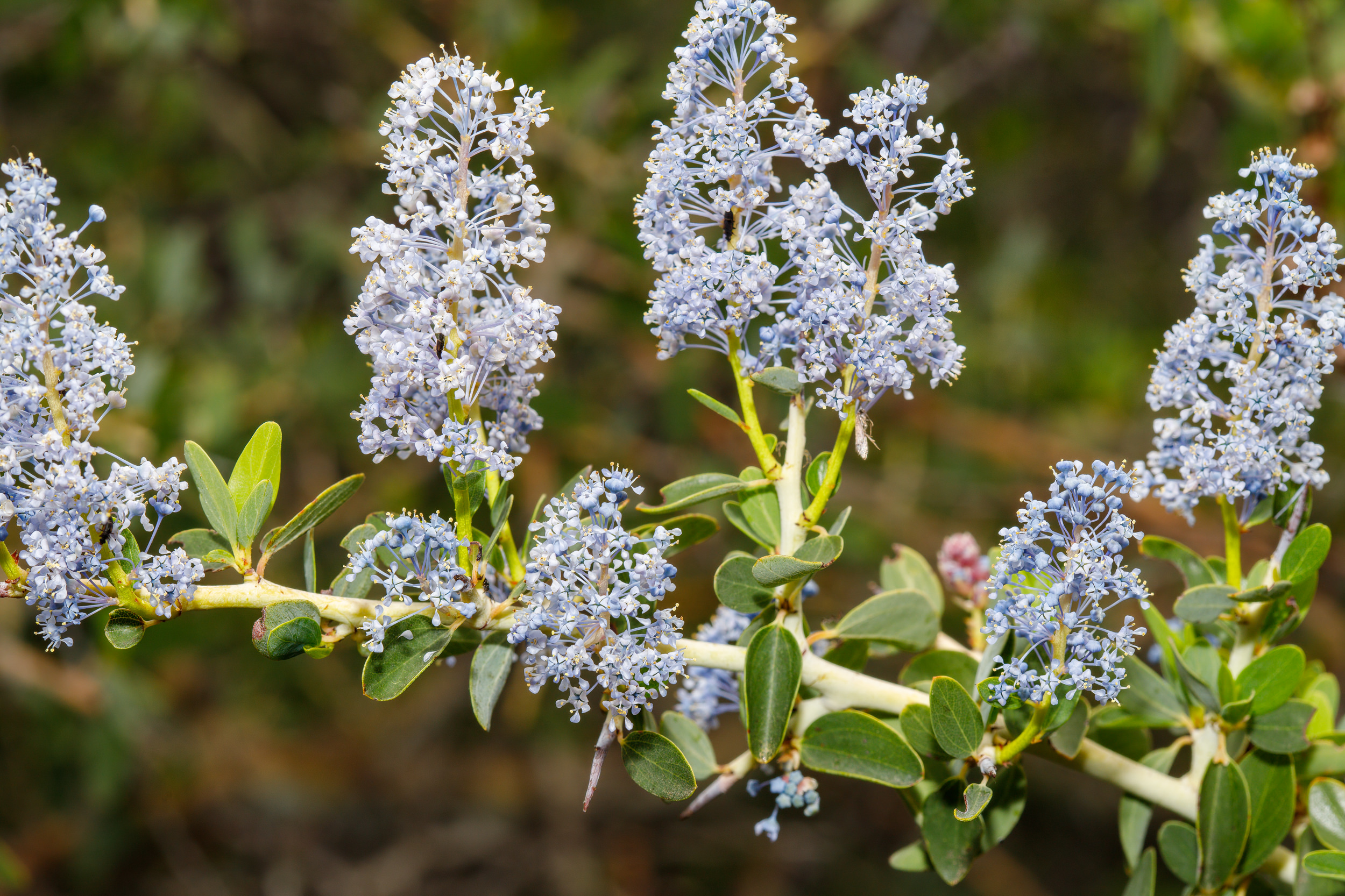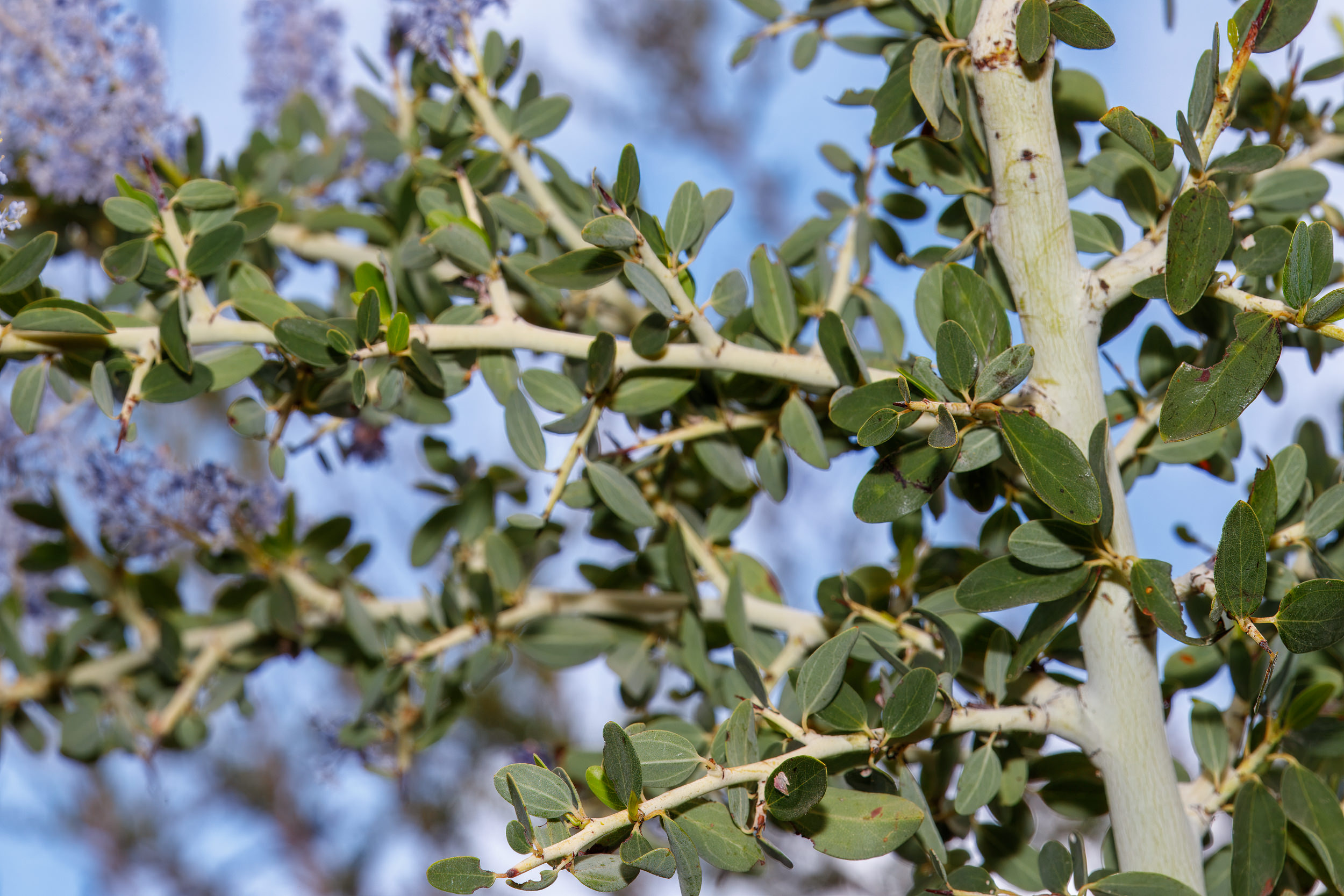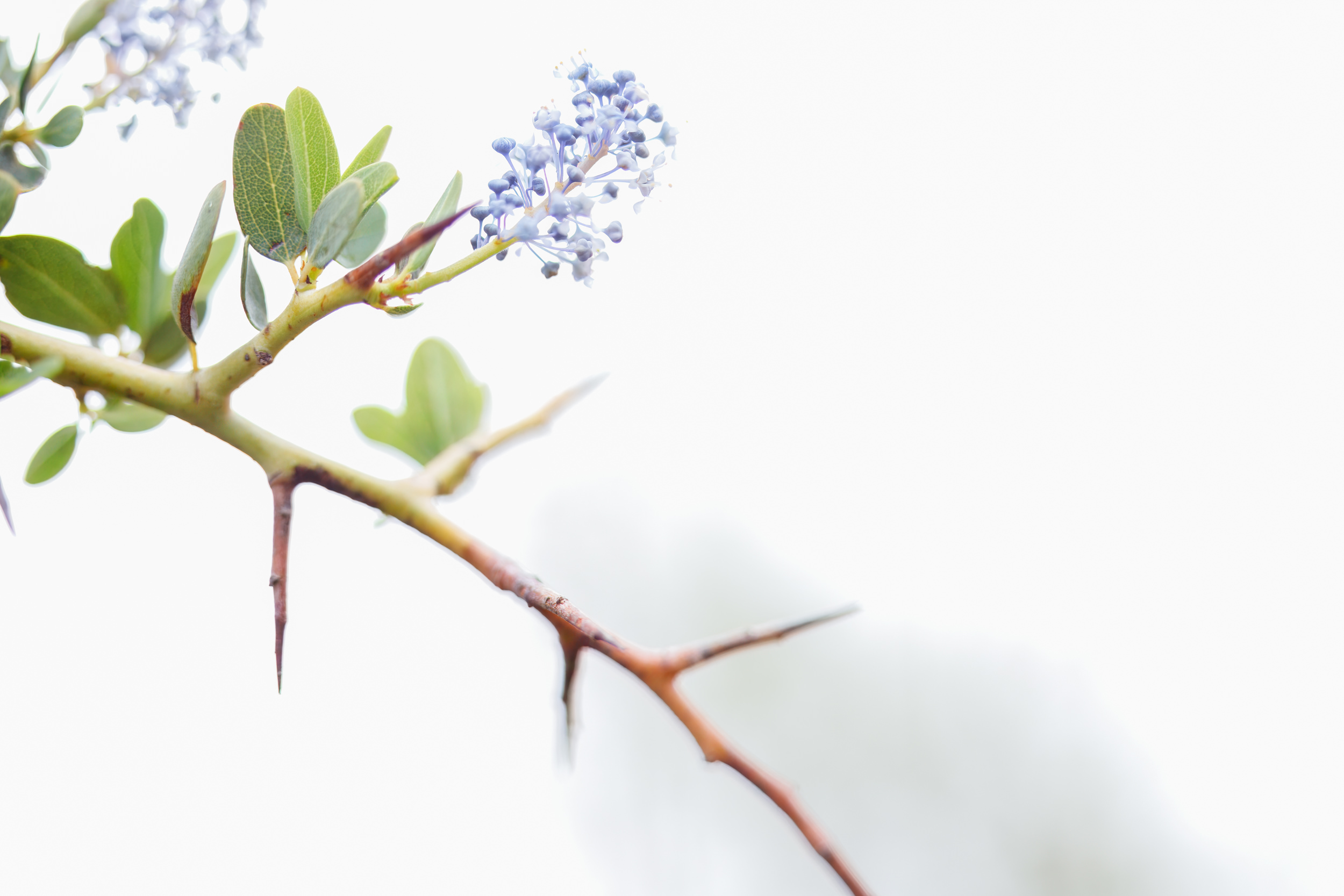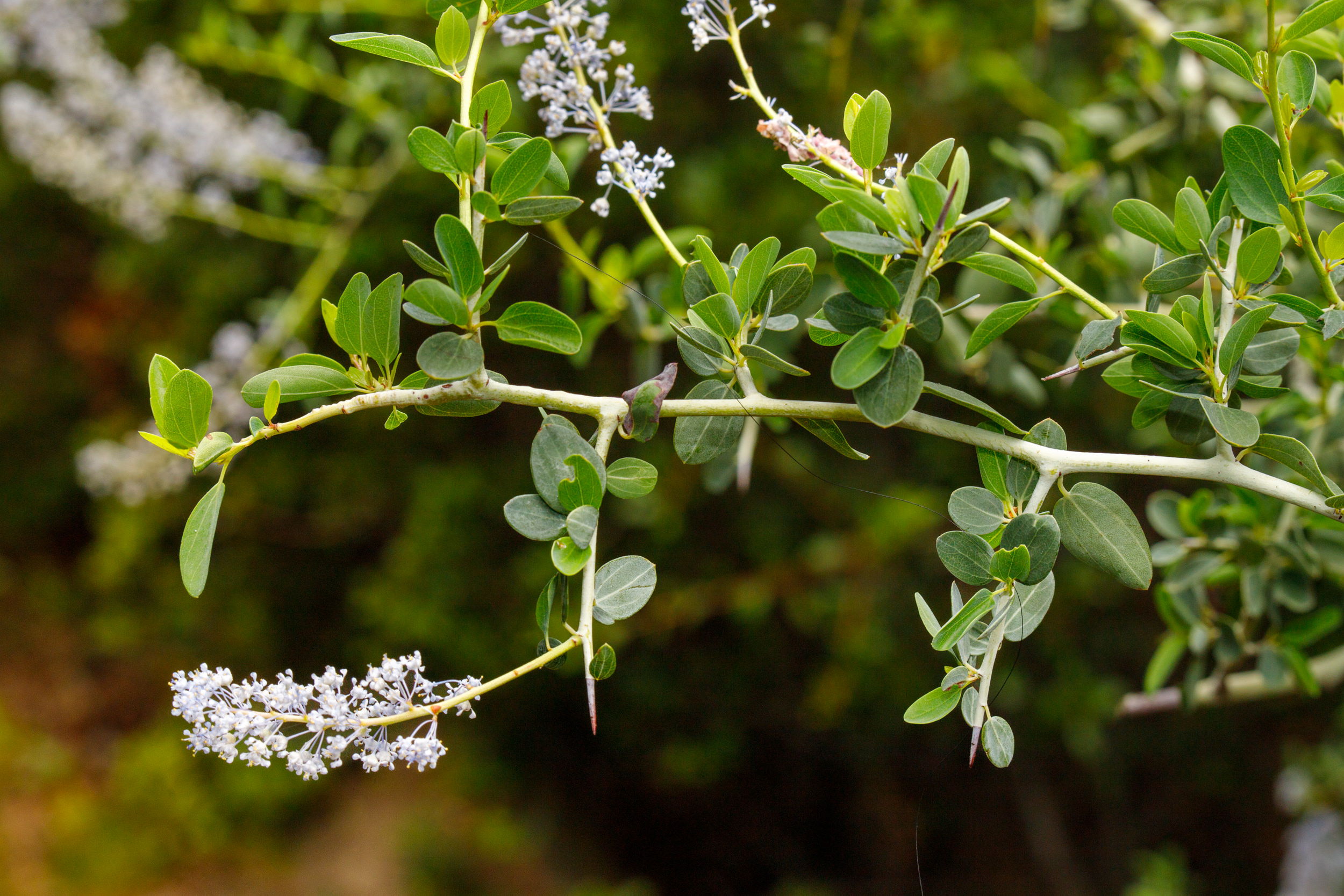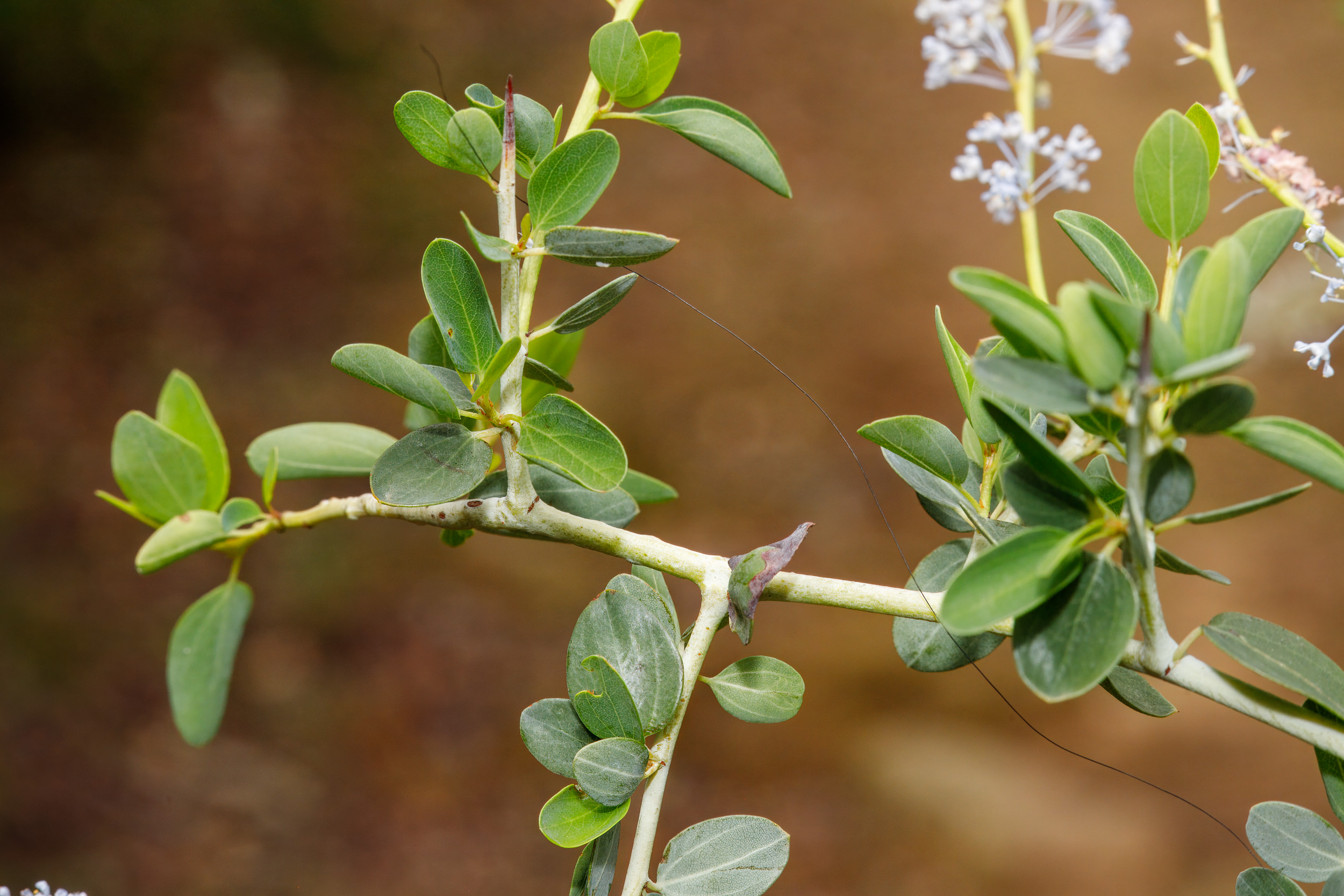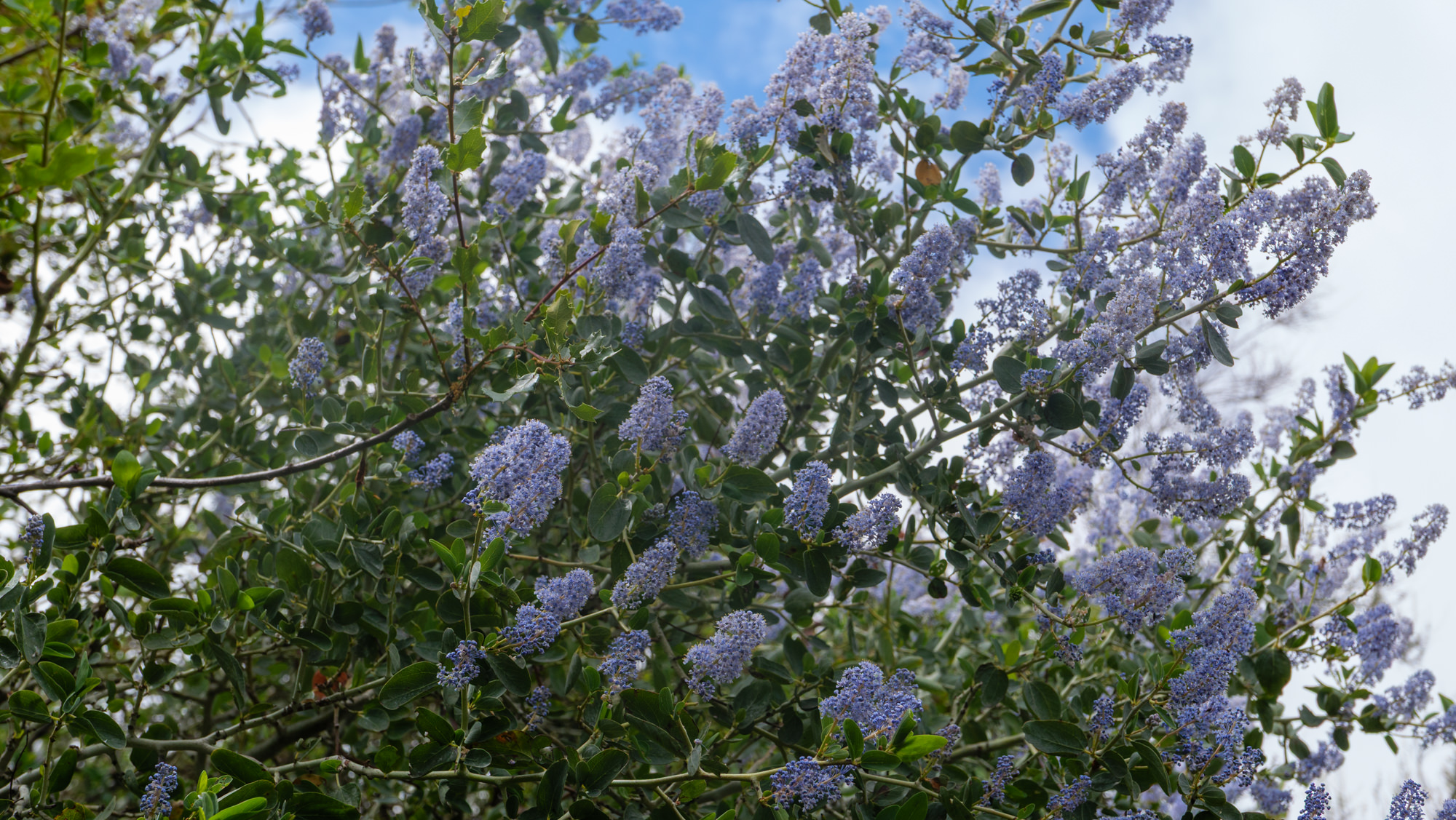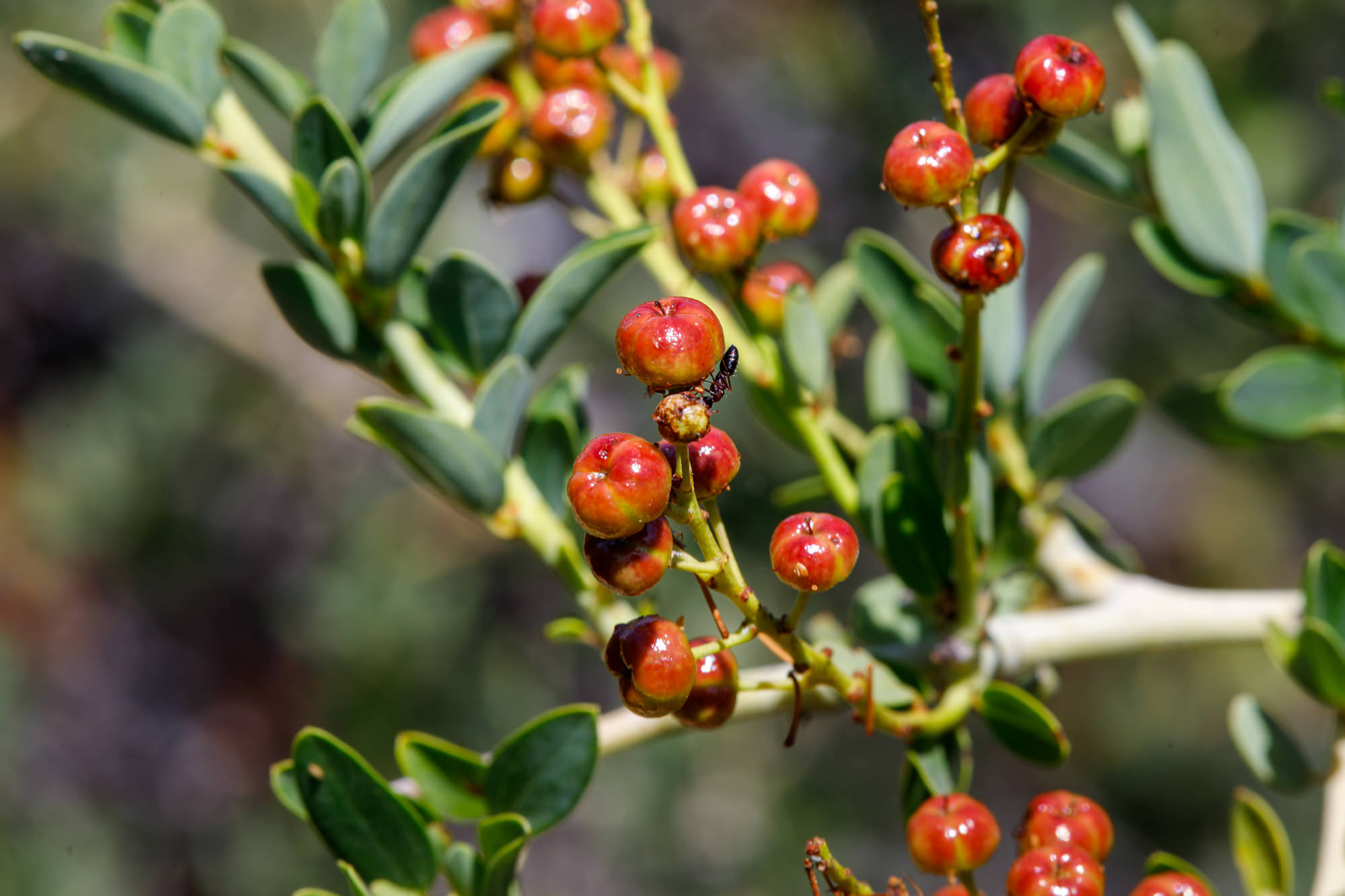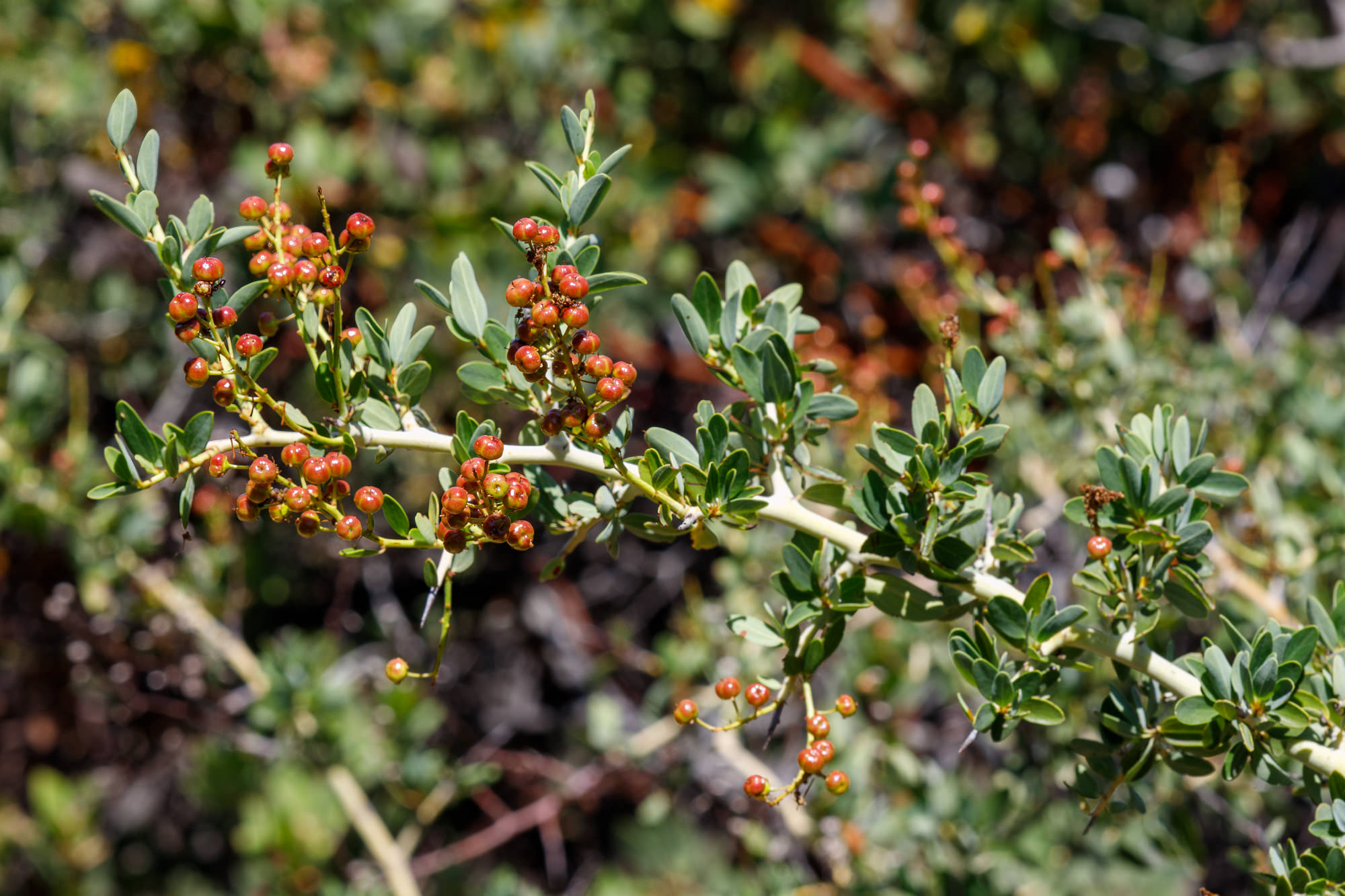Ceanothus White Thorn
- Ceanothus leucodermis
| Common Name(s): | Ceanothus White Thorn |
| Scientific Name: | Ceanothus leucodermis |
| Family: | Rhamnaceae (Buckthorn) |
| Plant Type: | Shrub or Tree |
| Size: | 3 to 12 feet |
| Habitat: | Chaparral |
| Blooms: | April to May |
| Fire Response: | Stump Sprout or Seed |
White Thorn Ceanothus - Ceanothus leucodermis is a species of shrub in the buckthorn family Rhamnaceae and endemic to California. The Santa Monica Mountains are blessed with several species of shrubs/trees in this family. In the Santa Monica Mountains,C. leucodermis is the least common of the Ceanothus species. Uncommon, here but plentiful in the Cleveland, Angeles and the Los Padres National Forests. This preferred habitat includes most of the coastal mountain ranges where chaparral dominates the slopes. The white tinged trunks/branches, white to pale blue flowers and oblong 3 veined leaves can help identify this plant. The thorns on this shrub are significant and offer a painful reminder should you try to move the branches out of your way.
This is a large, erect shrub approaching 4 meters (13 feet) in height. White-tinted branches with a tree-like trunk. The evergreen leaves have 3 veins, are alternately arranged, small and oblong. They are dark green, fuzzy with hairs on the underside, and are edged with tiny teeth. The flower cluster is a cluster or series of clusters of blue or white flowers. The production of seeds begins when the plant is approximately 5 years old and can continue for 35 or more years. The fruit of this shrub is a capsule containing seeds and lacks the horns of our other ceanothus species. These seeds can be explosively propelled away from the parent plant however, most seeds simply drop beneath the plant. Small mammals and insects consume seeds but the seed output is sufficient enough to collect in the leaf litter and soil to form a persistent seed bank. This is important because the plant can sprout from a stump after a fire only if the plant is not killed by the fire. Having 2 options increases the chances that there is a next generation - an insurance policy is one way to see this.
Supporting this ceanothus is a tap root that can extend down 20 feet! This helps the plant grow, thrive and survive over a 70 year period.
Ceanothus species are important nitrogen fixers, improving soil fertility through a symbiotic relationship with bacteria in their root nodules. They provide critical habitat and forage for wildlife — many birds, bees, and butterflies use them for food and shelter.
Fire Response: Ceanothus leucodermis can sprout from stump or seed. Heat stimulates seed germination by increasing permeability to water. A side note -
Ceanothus leucodermis rapidly sprouts from root crowns when branches are removed. Interestingly, the plant has nodules where bacteria in the genus Frankia, fix Nitrogen into the soil - this occurs more frequently in the first couple of years in the life of this shrub.
Source: https://vegetation.cnps.org/alliance/164
Medicinal Uses: Native Californians traditionally used various Ceanothus species for medicinal purposes and even as a soap substitute — the flowers can create a mild lather and they smell wonderful.
Link to Calflora.net - the best source of this fascinating information.
Name Origin: Ceanothus: from the Greek keanothus, a name meaning thistle or spiny plant which was applied by Theophrastus and/or Dioscorides to an Old World plant believed by some to have been Cirsium arvense, and reused by Carl Linnaeus when he published it in 1753.
leucodermis: white-skinned
Contributed by George Sherman
Featured Plants in the Rhamnaceae (Buckthorn) Family:
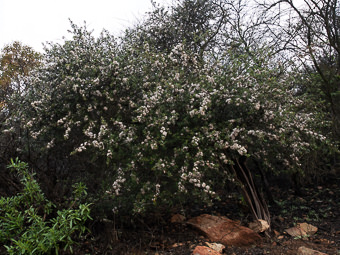
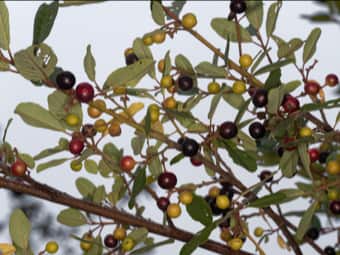
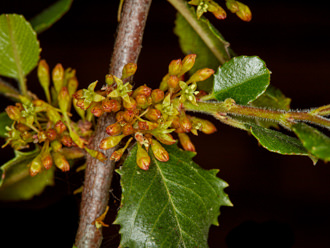
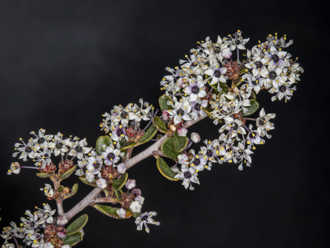
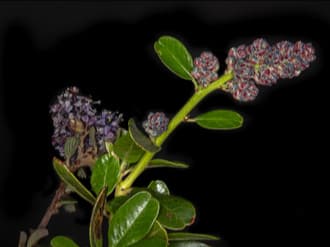
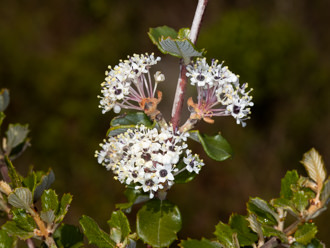
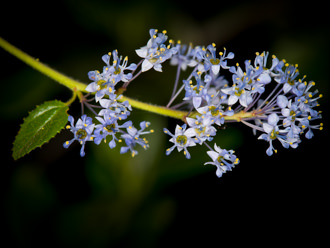
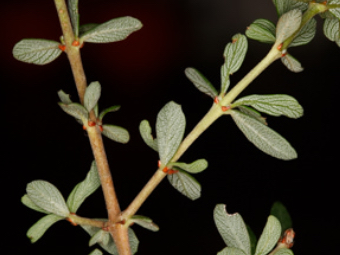
Last modified: April 29 2025 17:05:12.
Number of Images: 18
Image Size Total: 14,134,385
References:
Wildflowers of the Santa Monica Mountains, by Milt McAuleyFlowering Plants: The Santa Monica Mountains, Coastal and Chaparral Regions of Southern California, by Nancy Dale
Chumash Ethnobotany: Plant Knowledge Among the Chumash People, by Jan Timbrook
Leaf Shapes Primer - Botanical Terms for Leaves: - Link


